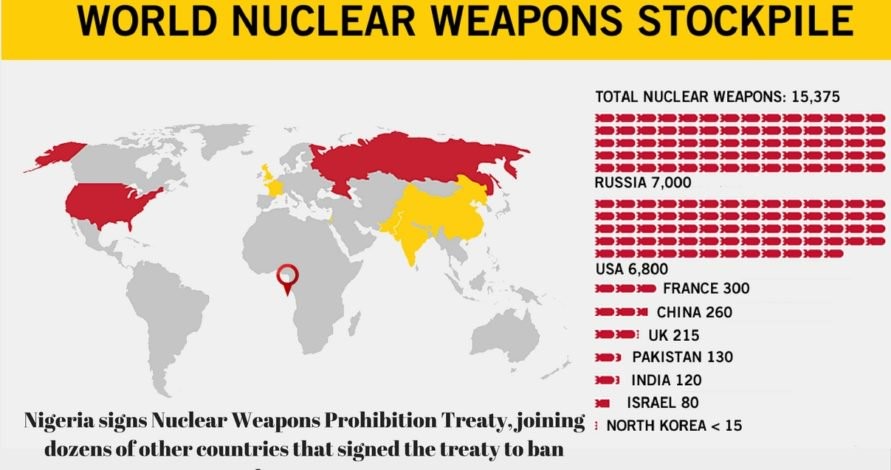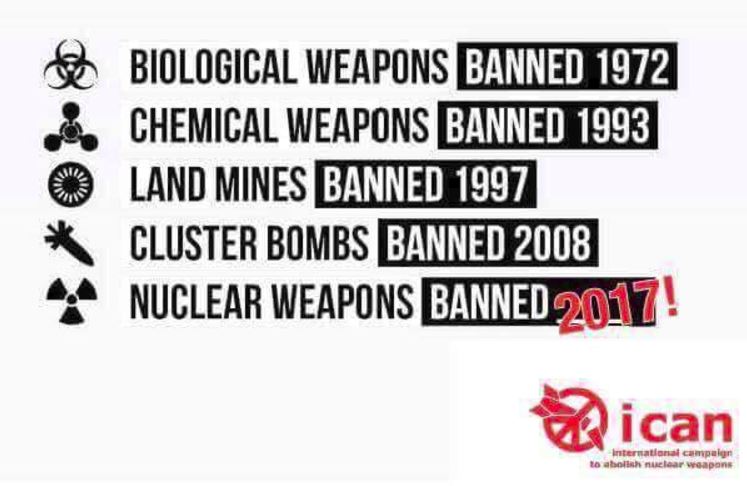
Joining the Nuclear Weapons Ban Treaty Has Never Been More Urgent
Tilman Ruff / John Menadue’s Public Policy Journal
(May 3, 2021) — Its official — the first meeting of states parties to the Treaty on the Prohibition of Nuclear Weapons (TPNW) will be held on 12-14 Jan 2022 in Vienna.
The TPNW is the first new multilateral nuclear disarmament treaty to enter into force in 49 years, (since the Seabed Treaty prohibiting weapons of mass destruction on the seabed). Ironically nuclear weapons, the most destructive of all weapons, were the last weapons of mass destruction to be banned. Adopted at the United Nations in New York on 7 July 2017, the TPNW now has 86 signatories and 54 ratifications, and entered into legal force on 22 Jan this year.
Despite Australia having joined all the other treaties banning inhumane and indiscriminate weapons — including biological and chemical weapons, anti-personnel landmines and cluster munitions — our government has been one of the most active opponents of the TPNW, the first time Australia has ever boycotted multilateral disarmament negotiations.
The TPNW is a landmark, containing:
- The most comprehensive statement in any treaty of the evidence underpinning the urgent humanitarian imperative to eliminate nuclear weapons.
- The first nuclear disarmament treaty to recognise disproportionate impacts of nuclear weapons activities on indigenous peoples, and the first disarmament treaty to recognise disproportionate impacts of nuclear weapons on women and girls;
- The first comprehensive and categorical prohibition of nuclear weapons;
- The only treaty-codified framework for the elimination of nuclear weapons and programs — time-bound, verified and adaptable;
- For the first time in the nuclear field, like the landmine and cluster munitions bans, obligations on states parties to assist victims of nuclear weapons use or testing, and contribute to feasible environmental remediation of areas contaminated by nuclear weapons use or testing.
The TPNW is essentially the only positive development in the face of growing danger of nuclear war. The Doomsday Clock this year was kept at 100 seconds to midnight, further forward than it has ever been. It was moved there last year with the assessment that “the international security situation is now more dangerous than it has ever been, even at the heart of the Cold War”. This year, the assessment stated: “the potential to stumble into nuclear war — ever present — has grown”.
The US intelligence community annual assessment of worldwide threats to Congress in 2019 highlighted that in a climate stressed world with intensifying global instability, the likelihood of armed conflict and danger of escalation to nuclear war were growing. Over the last decade, we have seen the number of internationalised armed conflicts rapidly grow.
Proliferating cyber-attacks put nuclear command and control at risk in myriad new ways.
While deterring nuclear attack is the usual claimed justification, each nuclear-armed state has plans to use its nuclear weapons to prevail militarily, and leaders in all of them have in recent years made nuclear threats.
All 9 nuclear-armed states are not only failing to disarm, but investing gargantuan sums in not just retaining but modernising their arsenals with new capacities and weapons, some never seen before, like hypersonic delivery vehicles, and Russian nuclear-powered missiles and torpedos. US nuclear warhead spending is at an all-time record level.
Recently the Biden administration requested a 2021 military budget of US$753 billion, the increase of US$12.6 billion from last year being more than the total 2021 budget for the US Centres for Disease Control and Prevention. In the US, military spending, even in this time of pandemic and social crisis, accounts for half of total discretionary government spending, and refurbishment of the whole nuclear weapons complex over the next 30 years is projected to consume US$2 trillion.

In FY2021, US nuclear weapons and related expenditure, including nuclear weapons delivery systems, missile defence and environmental clean-up and legacy costs will reach US$74.75 billion.
To set a wider context, on 26 April SIPRI released its report on world military spending in 2020 — estimated at US$1981 billion, despite the global pandemic and associated health and social crises, an increase of 2.6% on 2019 in real terms, the largest increase since the global financial crisis of 2019. As Mikhail Gorbachev presciently wrote in 2017: “it all looks as if the world is preparing for war,” including nuclear war.
In recent weeks the United Kingdom has reversed modest decline in its nuclear arsenal, announcing a 40% increase. As the UN Secretary-General has noted, this is in clear contravention of the UK’s obligations under the nuclear Non-proliferation Treaty (NPT). It is painfully clear that none of the nuclear-armed states are currently in any way serious about fulfilling their obligation to eliminate their nuclear arsenals.
Meanwhile, the global stockpile of highly-enriched uranium and plutonium is enough to build over 220,000 nuclear weapons. An effective regime to cease production of, secure and where possible eliminate these materials is nowhere in sight.
The evidence that nuclear weapons are effectively global suicide bombs which cannot be used as legitimate weapons and which threaten rather than enhance anyone’s security has never been clearer.
Extensively peer-reviewed, published and validated scientific findings show that even a regional nuclear war utilising less than 2% of the global nuclear arsenal and less than 1% of its explosive yield would loft millions of tons of black smoke into the stratosphere, within days plunging temperatures worldwide to ice age levels, reducing rainfall and sunlight. The smoke would take over a decade to clear, decimating agriculture and condemning upwards of 2 billion people to starve to death.
The TPNW builds on the solid lessons of history that prohibition treaties have been key to driving work to eliminate inhumane weapons, influencing countries even that do not join them, and that no weapon has been controlled without first being prohibited.
There is much work to be done before, during and beyond the first meeting of states parties to implement the treaty and use it to advance the elimination of nuclear weapons.
To regain any credibility that it is serious about fulfilling its nuclear disarmament obligations, the Australian government needs to be in the room and engage constructively with this important new benchmark in international law, as well as what motivated it: the evidence of catastrophic consequences of any use of nuclear weapons, which cannot be effectively addressed, of the insecurity created by nuclear weapons; and well-founded alarm at the growing danger of nuclear war while nuclear disarmament is going backwards, and the nuclear-armed and accomplice states — including Australia — have no other plan.
Tilman Ruff AO is Co-President of International Physicians for the Prevention of Nuclear War (Nobel Peace Prize 1985) and co-founder and founding international and Australian Chair of the International Campaign to Abolish Nuclear Weapons (ICAN), awarded the 2017 Nobel Peace Prize, the first to an entity born in Australia.
Posted in accordance with Title 17, Section 107, US Code, for noncommercial, educational purposes.